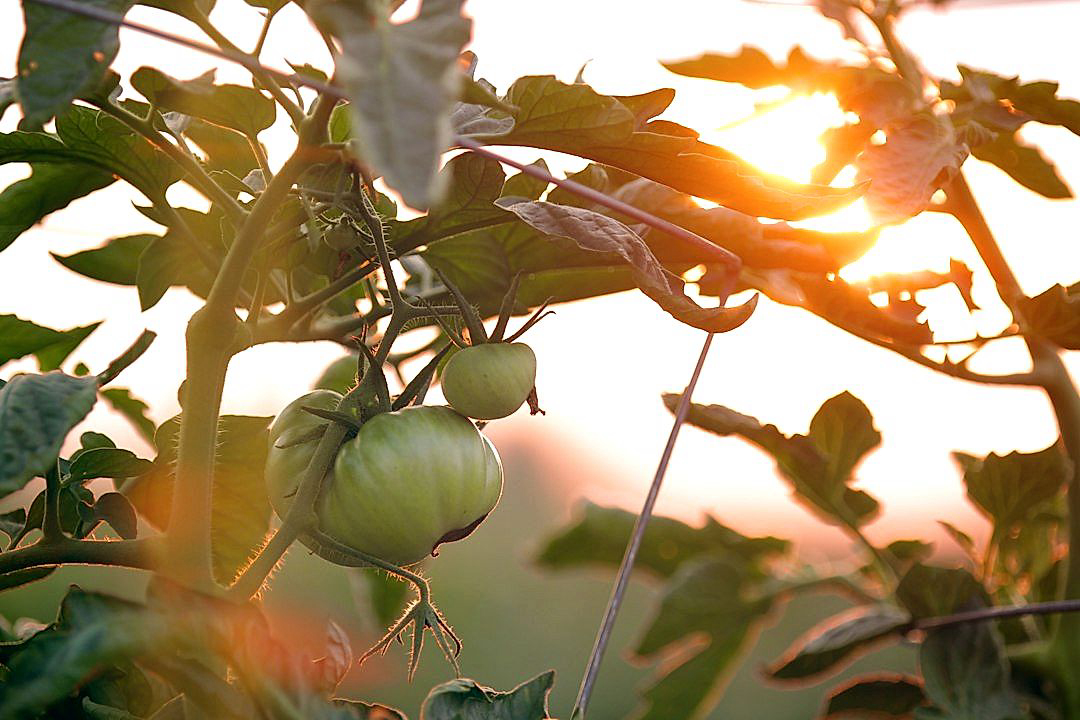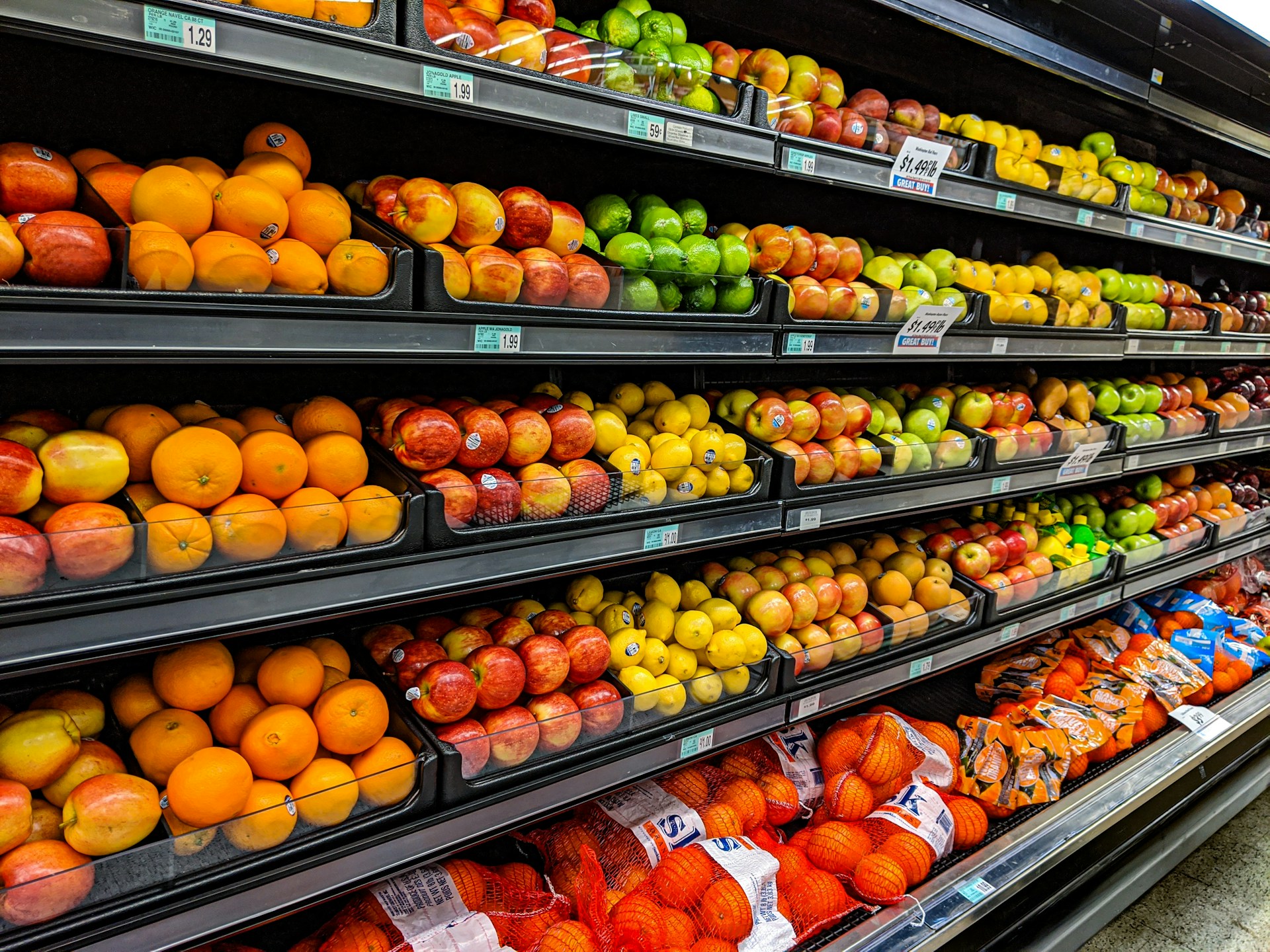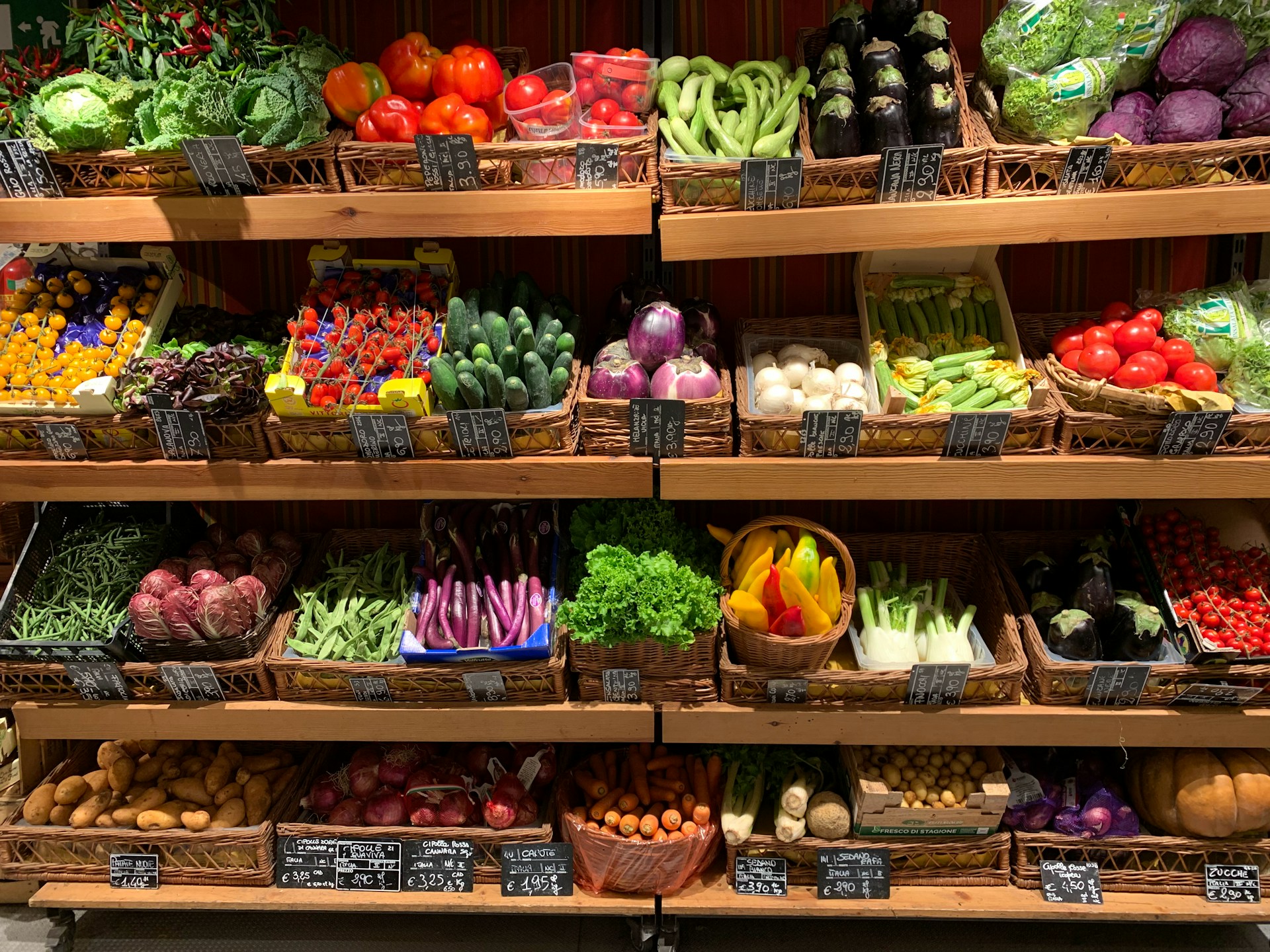In the realm of the agri-food sector, choosing the correct pricing strategy remains crucial for success.
Processed produce, a significant part of this sector, requires meticulous consideration in pricing.
It can make a tremendous difference in both the market position and profit margins of businesses.
Yet, establishing an effective pricing strategy is no simple task.
It demands comprehensive understanding of market dynamics, consumer behavior, and cost structures.
This blog aims to dissect these aspects further, providing you with insightful guidance towards optimal pricing approaches for your processed produce.
Contents
Pricing Strategies For Processed Produce
1. Cost-plus Pricing Strategy
One of the most simple and straightforward pricing strategies for processed produce is the cost-plus pricing strategy.
This pricing mechanism involves calculating the total cost of production and adding a specific markup to ensure profitability.
The total cost includes all costs associated with production, from the acquisition of raw materials to processing and packaging.
In the processed produce industry, these costs also include washing, trimming, peeling, chopping, and packaging automation activities.
Additionally, costs related to quality controls, sanitation practices, food safety measures, marketing, administration, distribution, and labor are incorporated in the total cost
The markup is essentially the profit margin that the company determines would be appropriate to cover its operational expenses while also ensuring a reasonable return on investment.
This could be a fixed amount or a percentage of the cost of production.
For instance, if the cost of producing a bottle of processed juice is $2 and the company decides on a markup of 50%, the selling price would be $3.
One of the key aspects of the cost-plus pricing strategy is that it enables a company to ensure its profitability by directly controlling its pricing based on their production costs.
However, while cost-plus pricing ensures that companies will not be selling their products at a loss, it does not take into account market conditions or the pricing strategies of competitors.
As such, this strategy would work best in an environment where there is a steady demand for the product and minimal competition.
Another potential downside to this strategy is that it tends to encourage complacency on the part of the company since there’s no incentive to seek out more efficient or cost-effective ways of producing the finished product.
Nevertheless, for businesses that operate in the processed produce industry, where price volatility is a common challenge, the cost-plus pricing strategy provides a means to maintain stable prices and profitability.
Even in the face of fluctuating input costs, a cost-plus pricing strategy can help maintain product pricing stability, which can be advantageous in negotiating long-term contracts with retail partners.
Long story short, though not without its limitations, the cost-plus pricing strategy can be an effective way for processed produce companies to secure their bottom line and negotiate the unpredictable terrain of the processed food industry.
2. High-Low Pricing Strategy
In the world of processed produce, understanding various pricing strategies, such as the high-low pricing strategy, is integral to a successful business.
The high-low pricing strategy denotes pricing an item high initially and then gradually dropping the price to give the impression of a sale or discount over time.
It is an effective approach especially when dealing with perishable goods like processed produce.
The perceived value of a premium price often entices buyers, creating a sense of urgency to purchase the item before the price drop.
Successful implementation of high-low pricing strategy can lead to accelerated sales, creating a spike in revenue during the initial high price period.
The majority of consumers tend to make purchases during the price drop, leading to a significant increase in sales volume.
The cyclic nature of this strategy keeps the momentum of sales habitually high, keeping customers interested and engaged.
However, one needs to tread carefully while employing this strategy as frequent and abrupt price changes can confuse the customer leading to price sensitivity.
This strategy requires a keen understanding of market trends, consumer behaviour, and seasons.
Customizing the high-low pricing curve in sync with the farmers’ produce harvesting season can draw maximum profits especially when the supply is new and fresh.
Contextual usage of this strategy during the launch of a new variety of processed produce can not only increase visibility but also leverage the natural curiosity of consumers.
Moreover, it creates a sense of exclusivity and luxury around the produce, enhancing the brand’s image.
But, a word of warning, a high-low pricing strategy may not be sustainable in the long run due to the potential risk of customer attrition.
On the flip side, a well-executed high-low pricing strategy can give a serious boost to your profit margins.
The key lies in finding the appropriate balance in your pricing variation.
3. Economy Pricing Strategy
In the scope of processed produce, the economy pricing strategy has quite a relevance.
This strategy, in essence, involves setting prices at an extremely low level, making the products affordable for a broad segment of customers.
Given the competitive nature of the processed produce sector, economy pricing can be an effective way to attract consumers who prioritize cost over other factors.
Generally, this approach is leveraged by businesses with strong production efficiencies that can maintain profitability even at lower price points.
Most notably, the economy pricing strategy might be most ideal for large scale producers of processed produce with capabilities to producing and selling in high volumes.
One major advantage of this strategy is that it allows businesses to capture a significant market share by outpricing competitors.
However, while this strategy might lead to high sales volume, the profit margins are typically low due to lean pricing.
<pThus, it requires rigorous cost control and efficiency measures to ensure sustainable profitability.Besides, adopting the economy pricing strategy necessitates careful considerations as the perceived value of the produce can be affected, which may deter some consumers.
Consumers may associate the low prices with lower quality and may opt for more expensive but high-quality alternatives.
In addition, some customers, especially those who prioritize quality and sustainable farming practices over price, may avoid economy-priced processed produce.
By all means, managing these perceptions is critical to the success of an economy pricing strategy.
Finnally, it is necessary to remember that while economy pricing can offer initial advantages for a business, long-term success requires integrating it with other pricing strategies for a holistic pricing approach.
This is to ensure that the company can adapt and respond to changes in market conditions and consumer preferences.
Therefore, the economy pricing strategy, while potentially advantageous, is not without its challenges and must be implemented with careful planning and strategic thought.
4. Skimming Pricing Strategy
In the world of processed produce, the skimming pricing strategy plays a significant role in pricing new, innovative, or premium products.
This pricing strategy involves setting high prices initially after the product launch.
The objective of this strategy is to ‘skim’ the cream of the market, which means capturing the segment of consumers who are willing to pay a premium for the product’s novelty or perceived superiority.
This strategy is often viable when the product has unique features or advancements that justify a higher price and cannot be easily replicated by competitors.
In the context of processed produce, a new organic product line, a unique fusion flavor, or a cutting-edge packaging solution might be poised to undergo a skimming strategy.
In other words, the skimming pricing strategy allows the business to recoup its investment quickly before competitors introduce similar offerings and put downward pressure on prices.
To successfully implement this pricing strategy, companies must invest heavily in marketing and branding that emphasizes the product’s unique features and justify its high price.
However, it’s crucial to understand that this strategy is not permanent, and prices typically reduce over time as the novelty wears off and as more competitors enter the market.
When skimming, it’s crucial to stay vigilant of market changes, consumer responses, and competitors’ actions to make necessary adjustments to prices and keep the product profitable.
It’s also worth noting that although the skimming pricing strategy works well for high-end or innovative products, it might not work for all types of processed produce.
For example, regular canned beans or frozen vegetables may not be able to command a high price based on novelty alone, necessitating a different pricing strategy such as economy or competitive pricing.
Thus, when determining whether to use a skimming pricing strategy, companies should consider their product’s uniqueness, market demand, competition, and target customers’ willingness to pay a premium price.
Although implementing a skimming pricing strategy can be complicated, when done correctly, it can significantly boost profits and help a company establish a strong market presence for its new offerings.
However, due to the high initial pricing, this strategy demands a strong commitment to product quality and customer service to prevent customer backlash and maintain positive brand perception.
Overall, while the skimming pricing strategy comes with its own set of challenges, if properly implemented and managed, it can help a company gain maximum profits from early adopters and premium clientele.
5. Penetration Pricing Strategy
A penetration pricing strategy is a method commonly used by businesses that are introducing a new product into the market.
It is an approach where the initial price set for the product is significantly lower than the eventual market price.
The goal of a penetration pricing strategy is to attract customers to the new product, gain significant market share, and then increase the price once demand has been established.
This strategy is particularly effective when the product being launched is a novel offering and the business needs to encourage consumers to try it out.
The low initial price acts as a major draw for customers, making the new product more attractive compared to the competition.
An example of the use of penetration pricing strategy is when a processed produce company releases a new type of fortified juice.
To stimulate initial demand and encourage consumers to choose this new juice over familiar brands, the company might price it lower initially.
Once the fortified juice gains popularity and consumers perceive its value, the company then gradually increases the price.
In the context of pricing strategies for processed produce, using penetration pricing can help a new product break into the market and outperform the competition.
However, the success of a penetration pricing strategy depends on the product’s ability to demonstrate its value to consumers prior to implementing a price increase .
If consumers do not perceive the product as high-value, a subsequent price increase might lead to a significant decrease in demand.
Therefore, while planning to use a penetration pricing strategy, businesses must first conduct thorough market research to better assess consumer perception towards their product.
Another potential downside to using penetration pricing strategy is that it might lead to price wars with competitors.
In order to prevent losing their market share, competitors might also lower their prices leading to reduced profits for all businesses involved.
A proper use of penetration pricing strategy requires careful planning, implementation, and review.
Despite some potential risks, penetration pricing strategy can be a powerful tool for businesses that need to establish their new processed produce in the competitive market.
6. Competitive pricing strategy
The competitive pricing strategy is a crucial technique that processed produce companies use to set their prices.
Under this approach, firms benchmark their prices against those of their competitors.
This strategy is vital in an environment where there are numerous processed produce companies, each offering products that are slightly different from each other.
The competitive pricing strategy is practical when the products have similar features and benefits, making price the significant differentiating factor.
Your processed produce company should analyze the competition aiming to understand their pricing structure.
By understanding the competitive landscape, your firm will identify the existing price gaps and set its prices accordingly.
For instance, if your counterparts price their organic sauces at $5 per bottle, you may decide to price yours slightly lower to attract price-sensitive customers, while maintaining profitability.
However, this price should cover your production costs and promise a reasonable return.
This approach’s success hinges on the quality of your market research as it allows you to gauge the market’s average prices fairly.
The quality of your products must also be on par with competing products if you choose to price them similarly.
Conversely, if your products offer more value or have superior quality, you can justify pricing them slightly higher than the competition.
Note that the competitive pricing strategy does not always incursion lower prices; sometimes the strategy might see you pricing your products higher if the situation on the ground justifies it.
In the event that your company has a better reputation, better customer service, or any other unique selling proposition, charging higher prices using the competitive pricing strategy can underline these unique attributes.
There’s also the matter of psychological pricing where you may price your products a few cents less than a whole number to give the perception of lower cost.
Like $9.99 instead of $10.00, these psychological techniques also form a vital part of the competitive pricing strategy.
Remember, the competitive pricing strategy is not a stagnant process; it requires regular monitoring and updates in line with shifts in the market.
In this regard, maintaining a thorough understanding of your competition and your target market dynamics becomes a continuous requirement.
7. Bundle Pricing Strategy
In processed produce business, a bundle pricing strategy can effectively drive sales and increase customer engagement.
Bundle pricing involves selling a set or package of related products at a discounted price as compared to purchasing the items individually.
This strategy can be a great tool for businesses that deal with diverse processed produce products.
Customers perceive this as a value-for-money proposition, encouraging them to buy more than they initially intended.
In a bundle pricing strategy, coupling high profit-margin products with low profit-margin ones distributes cost-effectively while still preserving a favorable profit margin.
For instance, a processed food business can bundle a jar of jam, a box of cereals, and a packet of preserved fruits, offering them at a slightly lower price than the total cost of individual items.
The use of this strategy not only increases the perceived value but also boosts the business’s sales volume.
Customers who may have bought only one product might be tempted to try the bundled goods, increasing sales and broadening consumer exposure to the company’s product range.
Furthermore, this strategy also helps in moving older or less popular stock by bundling them with high-demand processed produce.
Bundle pricing strategy also deters competition since competitors must match several products to provide comparable value.
Importantly, while implementing this strategy, businesses should carefully identify and group products that make sense together to the customers.
Offering a bundle of disparate products may confuse consumers and devalue the perception of the bundle.
Also, it’s crucial to determine the bundle’s price point that neither devalues the products nor discourages customers due to being too costly.
Rolling out occasional or seasonal bundled offers can also help generate excitement and drive impromptu sales.
Finally, businesses can also adopt a flexible bundling approach allowing customers to personalize their bundles, making it more appealing and resulting in increased sales.
Using a bundle pricing strategy can, therefore, not only boost sales but also enhance customer satisfaction by providing better value, making it a worthwhile consideration for processed produce businesses.
The Bottom Line
Pricing strategies are a critical aspect of any business, influencing consumer perception, sales, and revenues.
It is clear that understanding and implementing an appropriate pricing strategy from cost-plus, high-low, economy, skimming, penetration, competitive, or bundle pricing strategy can significantly impact a company’s success.
They each have their unique set of benefits catering to various market conditions, business objectives, and customer behaviors, meaning there’s no one-size-fits-all approach.
Thus, businesses need to carefully assess their product, market position, customer base, and competition to decide which pricing strategy or combination of strategies will yield the optimal results.




